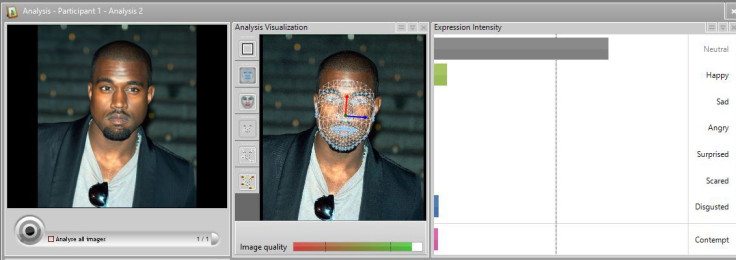Resting Bitch Face: The science behind the 'bitchy resting face' phenomenon

Resting bitch face, or bitchy resting face, is when people's blank expressions are interpreted as being unhappy, moody or surly. The "phenomenon" was highlighted in 2013 in a comedy YouTube video – but scientists at Noldus Information Technology have now looked at the cause of RBF.
Jason Rogers and Abbe Macbeth wrote an article explaining how the reason for RBF could be a result of our brains, which have become highly developed at analysing facial expressions. They said current technology allows researchers to go further by automating facial expressions. Specifically, they point to technology called FaceReader5, which can read more than 500 points on a person's face to determine the emotional expressions.
The basic universal emotions are happy, angry, sad, scared, surprised and disgusted. Other emotions have since been added, and one in particular - recognised as universal in the 1990s - is of particular importance. That emotion is contempt.
"While on the same continuum as anger, the philosopher Robert C Solomon and others, such as researcher John Gottman, treat contempt differently – it's more a blend of anger and sadness directed at those deemed below you," they wrote.
"Contempt is maladaptive in that it is particularly toxic when it develops between people in a relationship. While contempt can be displayed for a variety of reasons, it's easily recognised due to its curious facial phenotype: lips and brow not quite angry or sad, the lip tightened and raised more strongly on one side than the other. But in regards to this article: why is contempt included in a discussion on RBF?"
The team ran a series of videos and images "verified across social media as displaying true RBF" through the FaceReader technology to work out if there were common features among them. And it turns out there were.

"What emerged rather quickly was that across faces, the amount of anger, sadness, and fear displayed were highly variable... but to the surprise of the research team, one emotion continued to rear its ugly head: the dreaded contempt."
They found contempt measures pretty low on 'normal faces', accounting for around 3% of the overall expression. In RBF faces, it doubles – almost 5.7% of the total emotion. "FaceReader is not detecting enough contempt to reflect true contempt, because these faces are not actually displaying contempt. It just looks like contempt to the viewer," they wrote.
"Thus, it is the perception of that unconscious, subtle contempt expression that defines RBF. Although that face may not be intentional, the viewer's brain is wired to analyse, and recognise, when a face is displaying even minute traces of contempt. Because contempt is based upon elements of comparison and judgment, viewing this in someone's face creates a feeling of uneasiness, or uncomfortableness, for the person viewing that face."
© Copyright IBTimes 2024. All rights reserved.






